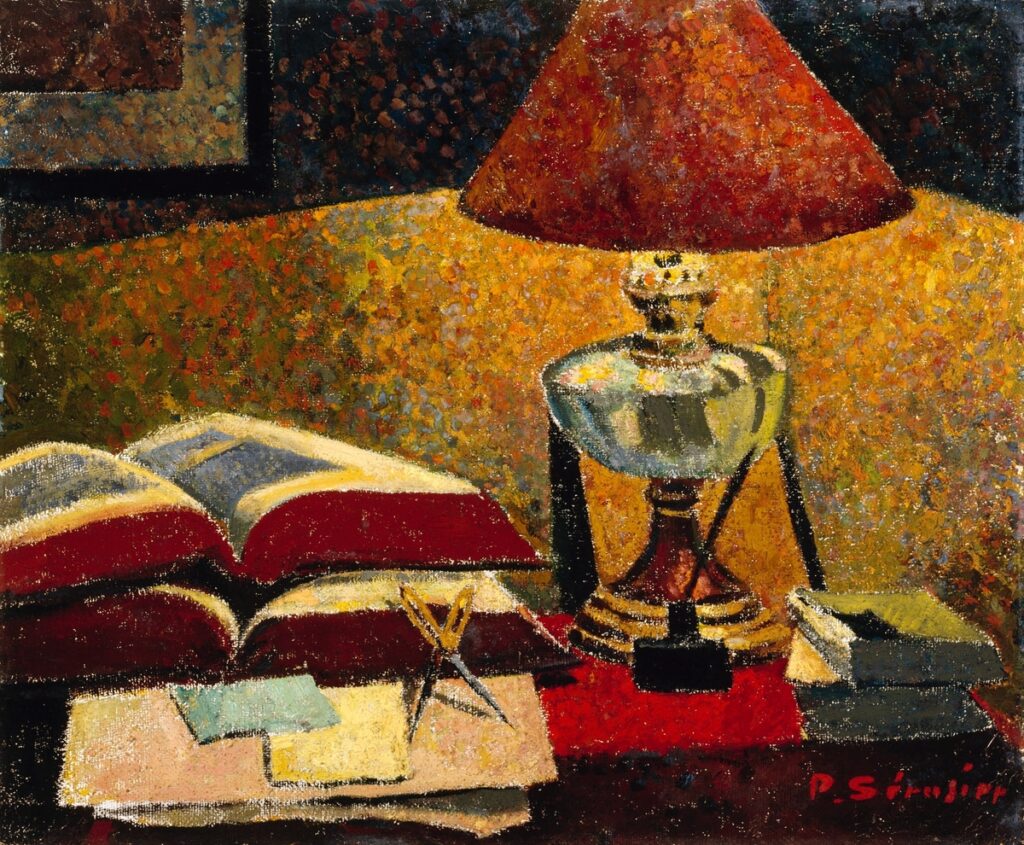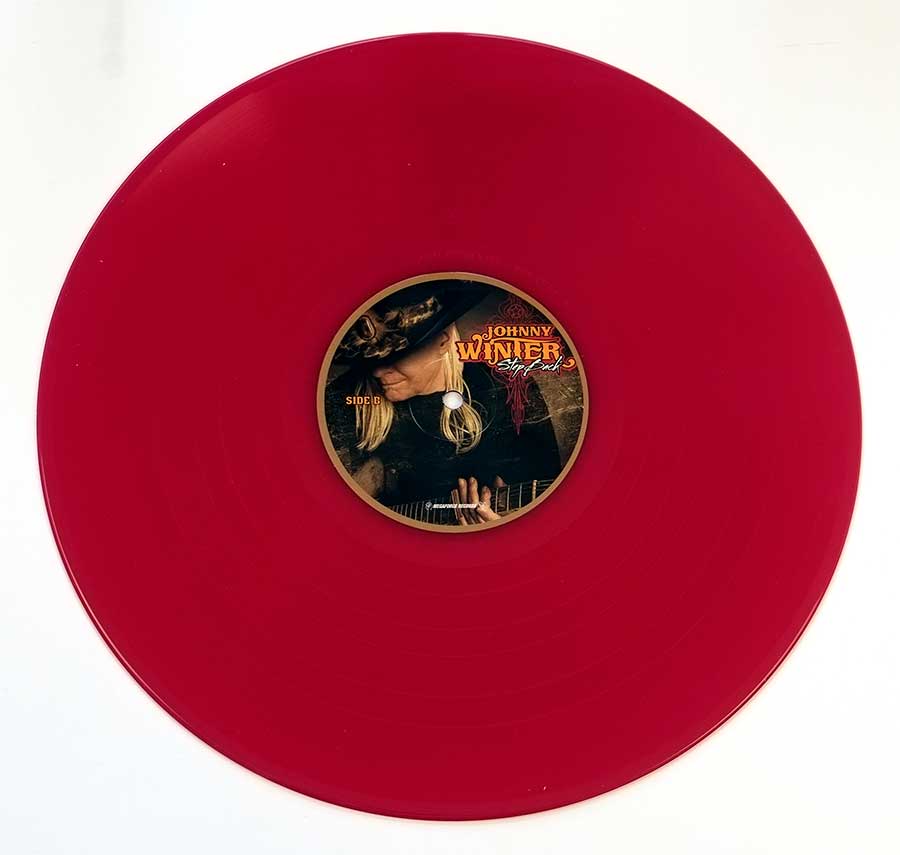Waylon Jennings. The name itself conjures images of denim and leather, a rebellious spirit, and a voice as weathered and true as the Texas plains from which he sprang. He wasn’t just a country singer; he was a force of nature, a pioneer who tore down the polished façade of Nashville’s “countrypolitan” sound and rebuilt it with grit, integrity, and an unyielding commitment to his own artistic vision. His journey was a tumultuous ride through the heartland of American music, marked by profound tragedy, soaring triumphs, and a relentless pursuit of authenticity that would redefine an entire genre.
For a generation stifled by the smooth, often saccharine productions emanating from Music Row, Jennings was a revelation. He was the embodiment of the “outlaw” movement, a term he ironically came to view with mixed feelings, yet one inextricably linked to his identity. But before he became the iconic figure with the custom Telecaster and the leather-clad defiance, Waylon’s path was paved with humble beginnings, formative experiences, and a burning desire to make his music, his way. We delve into the crucial early chapters of his life, exploring the foundational moments that shaped the man and the musician, leading to his defiant stand.
1. **Early Life and Musical Beginnings**: Waylon Arnold Jennings, born June 15, 1937, near Littlefield, Texas, was the oldest of four children. His family’s Irish, Black-Dutch, and Native American (Cherokee and Comanche) roots contributed to a deep-seated independent spirit. Initially named Wayland, his mother Lorene, unaware of Wayland Baptist College, changed the spelling to Waylon—a name he disliked at first but eventually embraced. The family moved to Littlefield, where his father, after working as a laborer, established a retail creamery, instilling a strong work ethic.
His musical journey began at eight, when his mother taught him “Thirty Pieces of Silver” on guitar. Practicing on relatives’ instruments, he later received his own used Stella and then a Harmony Patrician. These early instruments were crucial for developing his unique style, influenced by diverse artists like Bob Wills, Hank Williams, and Elvis Presley. He transitioned from family gatherings to public performances at youth centers, Jaycees, and Lions Clubs.
A significant early achievement was winning a talent show at Channel 13 in Lubbock with “Hey Joe.” These small-town Texas gigs were vital training grounds, allowing him to hone his craft and connect with audiences in a direct, unvarnished manner that remained a hallmark of his career. The foundation of the Waylon Jennings legend was quietly being laid, one performance at a time, preparing him for the larger stages and battles ahead.
Read more about: JD Souther: Remembering the Master Songwriter Who Shaped ’70s Country-Rock and Beyond

2. **The Buddy Holly Connection & “The Day the Music Died”**: At 14, Jennings’s ambition led him to KVOW in Littlefield, Texas, where owner J. B. McShan hired him for a weekly 30-minute program. This radio exposure quickly led to the formation of his first band, the Texas Longhorns, whose eclectic mix of country, western, and bluegrass hinted at his future genre-bending tendencies. At 16, convinced by his superintendent, he dropped out of high school, prioritizing his burgeoning musical career over formal education.
While driving trucks and performing at local radio stations like KDAV in Lubbock, destiny intervened. He met Buddy Holly, sparking a friendship that would profoundly impact his life. Holly, returning from an English tour, took Jennings under his wing as his first artist, helping him refine his image and arranging a recording session at Norman Petty’s studios. On September 10, 1958, Jennings recorded “Jole Blon” and “When Sin Stops (Love Begins)” with Holly on guitar and King Curtis on saxophone, marking his formal entry into the recording world.
Holly then hired Jennings to play bass for the ill-fated “Winter Dance Party Tour.” A fateful decision saw Jennings give up his seat on a chartered plane to the flu-stricken J. P. Richardson (The Big Bopper), and Tommy Allsup lost a coin toss to Ritchie Valens. This seemingly minor choice proved devastating. Shortly after 1:00 am on February 3, 1959, the plane crashed, killing Holly, Richardson, and Valens. Jennings’s survival, intertwined with a dark, joking exchange with Holly, “Well, I hope your ol’ plane crashes!”, precipitated a lifelong burden of guilt and contributed significantly to his later struggles with substance abuse.
Read more about: Beyond Belief: Famous Figures Who Actually Died on the Same Unforgettable Day
3. **Rebuilding in Phoenix and The Waylors**: The immense tragedy of Buddy Holly’s death left Waylon Jennings deeply affected. Returning to KLLL in Lubbock, his performances suffered, overshadowed by grief and a profound sense of responsibility for the crash. Denied a raise and emotionally drained, he left the station, briefly working for rival KDAV, but his musical drive had clearly faltered, necessitating a period of withdrawal and healing.
A move to Coolidge, Arizona, prompted by his father-in-law’s illness, provided a quiet fresh start. Here, he found a new platform performing at the Galloping Goose bar, where Earl Perrin, impressed by his voice, offered him a spot on KCKY. He continued playing in drive-in theaters and bars, slowly regaining his confidence and reconnecting with his music, patiently laying the groundwork for his comeback.
The turning point in Phoenix came after a successful show at the Cross Keys Club. James D. Musil, building a new club called JD’s in Scottsdale, was captivated by Jennings’s talent and engaged him as his main artist, designing the club around his performances. This stability allowed Jennings to form his iconic backing band, The Waylors, featuring bassist Paul Foster, guitarist Jerry Gropp, and drummer Richie Albright. At JD’s, Jennings refined his distinctive, rock-influenced country style, attracting a fervent local fanbase and defining the raw sound that would soon reshape country music.

4. **Signing with RCA & The Nashville Sound Era**: By 1961, Jennings’s local success in Phoenix led to a recording contract with Trend Records, followed by a deal with A&M Records in July 1963. At A&M, he recorded regional hits like “Four Strong Winds” and “Just to Satisfy You,” co-written with Don Bowman. However, A&M’s primary focus on folk music meant Jennings’s country-rock sound struggled for national traction, despite local popularity. This period, though not a commercial breakthrough, was crucial for him to refine his vocal delivery and understand the recording process.
The pivotal moment arrived when singer Bobby Bare heard Jennings’s “Just to Satisfy You” on Phoenix radio. Deeply impressed, Bare not only recorded the song himself but also contacted Chet Atkins, head of RCA Victor in Nashville, urging him to sign Jennings. Initially hesitant to leave his lucrative gig at JD’s, Jennings sought advice from Willie Nelson, who also suggested staying in Phoenix. However, the allure of wider recognition proved too strong. Herb Alpert graciously released Jennings from his A&M contract, clearing his path to Nashville.
Jennings formally signed with RCA Victor in 1965, marking his entry into the heart of the country music establishment. This move promised stardom but also initiated a battle for artistic control against the entrenched “Nashville Sound.” This era, known for its polished, pop-influenced productions and reliance on studio musicians, clashed fundamentally with Jennings’s raw style and desire to record with The Waylors. His first appearance on Billboard’s Hot Country Songs chart with “That’s the Chance I’ll Have to Take” signaled the beginning of a complex, creatively stifling chapter.
5. **Initial Chart Successes and Growing Frustration**: At RCA Victor, Waylon Jennings achieved significant commercial success despite the creative limitations of the “Nashville Sound.” His 1966 debut, *Folk-Country*, was followed by *Leavin’ Town* and *Nashville Rebel*. *Leavin’ Town* delivered his first top 10 single, a cover of Gordon Lightfoot’s “(That’s What You Get) For Lovin’ Me,” peaking at number 9. *Nashville Rebel*, an independent film soundtrack starring Jennings, further boosted his profile, with its single “Green River” hitting number 11.
The hits continued throughout the late 1960s. “Just to Satisfy You,” which Jennings noted showcased Buddy Holly’s influence, was a 1967 hit. “The Chokin’ Kind” reached number eight, and “Only Daddy That’ll Walk the Line” soared to number two in 1968. A Grammy Award came in 1969 for “MacArthur Park,” a collaboration with the Kimberlys, and “Brown Eyed Handsome Man” reached number three by year-end. These achievements solidified his status as a major country artist, yet beneath this commercial prosperity, Jennings harbored deep frustration.
Living in Nashville with Johnny Cash, Jennings found camaraderie amidst their shared disillusionment with the industry’s demanding tours and creative constraints. Playing “300 days on the road,” he accumulated debt and increased his amphetamine use, feeling “trapped on the circuit.” He yearned for the freedom to play his own guitar, select his own material, and record with The Waylors—practices discouraged by Nashville producers who favored the homogenized “countrypolitan” sound. This growing internal conflict set the stage for his eventual rebellion against the Music Row establishment.
Read more about: The Formative Years of a Rock Dynasty: Queen’s Ascent to Global Stardom, 1968-1975

6. **The Critical Decision for Creative Control**: By 1972, Waylon Jennings’s RCA contract was nearing its end, and his artistic frustration had peaked. The “countrypolitan” approach, with its orchestral arrangements and disavowal of traditional country instruments, was antithetical to the authentic, raw music he envisioned. He desperately sought the freedom to record with his own band, select his own songs, and produce music reflecting his true artistic identity, rather than bowing to industry demands. This creative stifling, compounded by a hospital stay for hepatitis, pushed him to the brink of considering retirement from music entirely.
Drummer Richie Albright intervened, convincing Jennings to persevere and suggesting he hire Neil Reshen as his new manager. This proved to be a pivotal decision. Coincidentally, on the day Jennings met Reshen, RCA offered a meager $5,000 bonus for signing a new contract with the same restrictive 5% royalty terms from 1965. This insulting offer, combined with the lack of creative consideration, solidified Jennings’s resolve. After consulting with Reshen, he flatly rejected the deal and hired Reshen on the spot, signaling his uncompromising fight for artistic rights.
Reshen, a shrewd manager, immediately began renegotiating Jennings’s contracts. A chance meeting with Willie Nelson in a Nashville airport led Reshen to manage Nelson as well, forging a powerful alliance. Jennings’s new deal with RCA was revolutionary: it included a $75,000 advance and, critically, granted him complete artistic control. Reshen even advised Jennings to keep his hospital beard, recognizing it would reinforce the emerging “outlaw country” image. This moment was a defiant declaration of independence, a stand against the Nashville establishment, and the prelude to Jennings’s most critically and commercially successful era.
Read more about: 7 Family Cars Rated ‘Top Picks’ for 2025: Unpacking Unrivaled Comfort and Safety for Modern Families

7. **Declarations of Independence: *Lonesome, On’ry and Mean* and *Honky Tonk Heroes***: With Neil Reshen now guiding his career and creative control secured, Waylon Jennings wasted no time in unleashing the music he had long envisioned. By 1973, Willie Nelson’s success with Atlantic Records, particularly in attracting rock and roll fans, further pressured RCA. Eager to avoid losing another potential star, the label was finally prepared to embrace Jennings’s authentic vision, setting the stage for a dramatic shift in country music, spearheaded by his newfound artistic freedom.
The year 1973 witnessed the release of two seminal albums: *Lonesome, On’ry and Mean* and *Honky Tonk Heroes*. These were not merely new recordings; they were powerful artistic manifestos. Recorded and released entirely under Jennings’s creative control, they marked a profound turning point in his career and for the genre itself. The music was raw, honest, and infused with the rock and roll energy that had long been suppressed. Critics lauded them as groundbreaking works, defying the polished conventions of the “Nashville Sound” and delivering an authentic, hard-hitting brand of country.
These albums transcended personal triumphs, becoming significant cultural statements. They signaled the definitive arrival of the “outlaw country” movement, a sound celebrating individuality, lyrical depth, and a rebellious spirit. *Lonesome, On’ry and Mean* and *Honky Tonk Heroes* resonated deeply with audiences weary of manufactured sounds, proving a hungry market existed for artists daring to be themselves. This freedom and integrity laid the foundation for Jennings’s most successful years, propelling him towards unprecedented commercial and critical heights, solidifying his status as a true American music legend.
Waylon Jennings’s journey wasn’t just about making music; it was about tearing down walls and redefining what country music could be. Having secured creative control and unleashed the raw power of *Lonesome, On’ry and Mean* and *Honky Tonk Heroes*, Jennings had emphatically declared his independence. But this was just the beginning of his widespread impact, as his uncompromising vision would continue to shake the foundations of Nashville, cementing his place at the forefront of the Outlaw movement and propelling him to unprecedented heights of fame and influence.

8. **Solidifying Outlaw Status and Chart Dominance**: The year 1976 was truly a watershed moment for Waylon Jennings and the entire country music genre. RCA, keen to capitalize on the burgeoning Outlaw movement, released *Wanted! The Outlaws*. This landmark compilation featured Jennings alongside Willie Nelson, Tompall Glaser, and his wife, Jessi Colter. More than just an album, it was a cultural phenomenon, becoming the first country music album ever certified platinum, shattering industry expectations and proving the immense appetite for this authentic, rebellious sound. It wasn’t just a win for the artists; it was a victory for artistic freedom.
Building on this incredible momentum, Jennings released *Ol’ Waylon* the following year. This album spawned a monumental duet with Willie Nelson, “Luckenbach, Texas (Back to the Basics of Love),” which soared to the top of the charts and became an anthem for those seeking a simpler, more genuine existence. The success of *Ol’ Waylon* was historic in its own right, as it became the first platinum album for any solo artist in country music, solidifying Jennings’s status as a bona fide superstar and an undeniable force reshaping the industry.
The collaborations continued to produce magic, with the 1978 album *Waylon and Willie* delivering another massive hit, “Mammas Don’t Let Your Babies Grow Up to Be Cowboys.” This era also saw the release of *I’ve Always Been Crazy*, an album that, despite its continued commercial success, hinted at Jennings’s complex feelings about the “Outlaw” label itself. In the title track, he candidly reflected on the overexploitation of the image, suggesting the movement had become a “self-fulfilling prophecy”—a testament to his thoughtful, self-aware artistry. This prolific period was capped by RCA’s release of his first *Greatest Hits* compilation in 1979, which quickly went gold and would later achieve quintuple platinum status by 2002, a true measure of his enduring appeal.
Read more about: Remembering the Voices: Every Iconic ‘We Are The World’ Singer We’ve Lost, And Their Enduring Legacy
9. **Crossover Success: The Dukes of Hazzard**: As the 1970s drew to a close, Waylon Jennings was not only a country music icon but also on the cusp of becoming a household name across America. In 1979, he lent his distinctive voice and rebellious charisma to the CBS series *The Dukes of Hazzard*, joining the cast as the Balladeer, the show’s beloved narrator. His gravelly, authoritative voice became synonymous with the adventures of the Duke cousins, instantly recognizable to millions of viewers who tuned in weekly.
Beyond his narrative role, Jennings made an indelible musical mark on the show. He composed and famously sang its theme song, “Good Ol’ Boys,” a track that perfectly encapsulated the show’s spirit of backwoods charm and defiant independence. This song, released as a single in promotion with the show, quickly became the biggest hit of his illustrious career. It soared to number one on the Billboard Country Singles chart, marking his 12th single to achieve that distinction.
“Good Ol’ Boys” wasn’t just a country hit; it was a bona fide crossover success, peaking at number 21 on the Billboard Hot 100. This mainstream exposure introduced Jennings to an entirely new, broader audience, expanding his reach far beyond traditional country fans. While primarily known for his narration, Jennings did make a single appearance as an actor in the series, playing himself as an old friend of the Duke family in the seventh-season episode, “Welcome, Waylon Jennings,” further cementing his legendary status in popular culture.

10. **The Highwaymen and Later Career Milestones**: The 1980s heralded a new chapter for Waylon Jennings, marked by a powerful collaboration that would become legendary in its own right. In the mid-1980s, Jennings joined forces with three other titans of country music—Johnny Cash, Kris Kristofferson, and Willie Nelson—to form the supergroup known as The Highwaymen. This formidable quartet released three albums between 1985 and 1995, creating a sound that blended their individual iconic styles into a cohesive and impactful whole, further burnishing their collective outlaw mystique.
Aside from his work with The Highwaymen, Jennings continued to forge his own path, achieving further commercial success. He released the gold-certified album *WWII* with Willie Nelson in 1982, demonstrating the enduring power of their partnership. In 1985, after signing with MCA Records, he released *Will the Wolf Survive*, an album that debuted at number one on Billboard’s Country albums chart in 1986, proving his continued relevance and artistic vitality.
While his album sales began to taper off in the late 1980s and early 1990s, Jennings remained a vibrant presence. He signed with Epic Records in 1990, and his debut release with the label, *The Eagle*, became his final top 10 album. His versatility extended beyond music; in 1985, he made a memorable cameo in *Sesame Street Presents: Follow That Bird*, playing a turkey farm truck driver and singing “Ain’t No Road Too Long.” He also collaborated on a children’s album, *Cowboys, Sisters, Rascals & Dirt*, in 1993, which included “Shooter’s Theme,” a heartfelt tribute to his son. Though record sales declined, he continued to draw large crowds to his live shows, and in 1994, he even made a small appearance in the film *Maverick*.
The later 1990s saw Jennings explore new avenues while maintaining his musical integrity. In 1996, he released *Right for the Time*, and in 1998, he teamed up with Bobby Bare, Jerry Reed, and Mel Tillis to form The Old Dogs, recording a double album of songs by Shel Silverstein. Despite decreasing his touring schedule after 1997 to prioritize family, he assembled his “hand-picked dream team,” Waylon & the Waymore Blues Band, performing concerts from 1999 to 2001. His final album, *Never Say Die: Live*, was recorded in January 2000 at Nashville’s Ryman Auditorium, a fitting capstone to a career defined by live performance.
Read more about: From Rhodes Scholar to Rebel Star: Tracing Kris Kristofferson’s Unconventional Path to Hollywood Stardom

11. **Personal Battles: Addiction and Recovery**: Behind the larger-than-life persona and unparalleled musical achievements, Waylon Jennings wrestled with profound personal demons, particularly a lifelong struggle with addiction. His journey into substance abuse began in the mid-1960s while living with Johnny Cash, where “pills were the artificial energy on which Nashville ran around the clock.” This early amphetamine use set a dangerous precedent, fueling his demanding touring schedule but also taking a heavy toll.
The battle escalated dramatically in 1977 when Jennings was arrested by federal agents for conspiracy and possession of cocaine with intent to distribute. A private courier had alerted the Drug Enforcement Administration about a package containing 27 grams of cocaine sent to Jennings by a New York colleague. While DEA and police searched his recording studio, Jennings, ever the defiant outlaw, managed to dispose of the drug while they awaited a search warrant, leading to the charges being dropped. This harrowing episode was candidly recounted in his song, “Don’t You Think This Outlaw Bit’s Done Got Out of Hand,” revealing the high-stakes reality beneath the myth.
By the early 1980s, his cocaine addiction had intensified to a crippling degree. Jennings openly admitted to spending an astonishing $1,500 a day on his habit, a staggering sum that drained his personal finances and ultimately led him to bankruptcy, accumulating a debt of up to $2.5 million. Despite this financial ruin, his innate integrity compelled him to insist on repaying every penny, embarking on additional tours, even as his work became less focused and his performances deteriorated under the weight of his addiction.
The turning point came in 1984. Jennings leased a home in the Phoenix area, initially intending to detox for a month with the misguided hope of returning to controlled use. However, during this period of introspection and struggle, he found the strength to quit cocaine entirely. He credited his youngest son, Shooter Jennings, as his main inspiration to finally overcome the addiction, transforming his life for good. This commitment to self-improvement extended beyond sobriety; in 1990, after he stopped touring, Jennings even earned his GED, studying by watching educational television programs, specifically to set an example for Shooter about the paramount importance of education.
Read more about: Al Pacino at 83: Beyond the Godfather – Unveiling a Cinematic Titan’s Unfolding Legacy, Personal Truths, and Unyielding Dedication to the Craft

12. **The Architect of Sound and Style: Music and Image**: Waylon Jennings was not just a singer; he was a singular force whose musical style and iconic image were meticulously crafted expressions of his rebellious spirit and deep artistic integrity. His music was instantly identifiable, characterized by his powerful, rough-edged singing voice, which possessed a unique phrasing and texture that conveyed profound emotion and lived experience.
Central to his signature sound was his distinctive “spanky-twang” guitar style. To achieve this, Jennings employed a pronounced ‘phaser’ effect, adding a swirling, resonant quality to his playing. He utilized a compelling mixture of thumb and fingers for the rhythmic parts, giving his guitar work a percussive drive, while switching to picks for his electrifying lead runs. His technique incorporated hammer-on and pull-off riffs, frequently punctuated by upper-fret double stops and further modulation effects, creating a sound that was both raw and incredibly sophisticated, blending country tradition with rock and roll edge.
His weapon of choice for much of his career was a 1953 Fender Telecaster, a used guitar that was a cherished gift from his backing band, The Waylors. This instrument was not just a tool; it was an extension of his identity, adorned with a distinctive leather cover featuring a black background with intricate white floral work, custom-carved by the talented leather artist Terry Lankford. Jennings further customized his guitar by filing down the frets, lowering the strings on the neck to achieve the unique “slapping sound” that became a hallmark of his playing. Later, he also famously used a 1950 Fender Broadcaster from the mid-1970s until he gifted it to guitarist Reggie Young in 1993.
Beyond his sonic innovations, Jennings cultivated an iconic visual image that perfectly complemented his outlaw persona. His signature look was characterized by his long hair, a prominent mustache, and a full beard, all exuding a rugged, untamed sensibility. He consistently sported a black hat and a black leather vest during his public appearances, creating a cohesive, instantly recognizable brand that resonated with his audience and firmly established him as the quintessential outlaw of country music.
Read more about: From Anemic to Awkward: Unmasking 15 Muscle Cars That Truly Missed the Mark – And Why We Can’t Forget Them
13. **Later Life, Health Struggles, and the Final Curtain**: By the late 1990s, the years of hard living, extensive touring, and personal battles began to catch up with Waylon Jennings. Decades of smoking and drug use, compounded by obesity and a poor diet, had taken a severe toll on his health, leading to the development of Type 2 diabetes. While he successfully quit cocaine in 1984, the journey to full health was ongoing. In 1988, he finally broke his six-pack-a-day smoking habit, another significant step towards reclaiming his well-being.
Despite these efforts, the cumulative effects of his lifestyle manifested in serious health crises. That same year, 1988, he underwent critical heart bypass surgery, a stark reminder of the physical demands placed on his body. As the new millennium dawned, his diabetes worsened considerably, leading to debilitating pain that severely reduced his mobility and eventually forced him to end most of his touring engagements, a heartbreaking decision for an artist who thrived on live performance.
The year 2000 brought further medical interventions as Jennings underwent surgery to improve the blood circulation in his left leg. Tragically, by December 2001, the complications of his diabetes became so severe that his left foot had to be amputated at a hospital in Phoenix. This profound physical challenge marked the final chapter of his struggle with illness.
On February 13, 2002, Waylon Jennings peacefully passed away in his sleep from complications of diabetes at his home in Chandler, Arizona, at the age of 64. His death marked the end of an era for country music, but his impact would resonate for generations. He was laid to rest in the City of Mesa Cemetery in nearby Mesa, leaving behind a legacy as a man who lived and died on his own terms.
Read more about: Hollywood’s Poignant Farewells: Unpacking the Legacies of Actors Whose Journeys Concluded Too Soon

14. **An Enduring Legacy: Influence, Honors, and Posthumous Echoes**: Waylon Jennings’s passing did not diminish his colossal influence; instead, it solidified his legendary status. His prolific career yielded an astounding record of commercial success: between 1965 and 1991, ninety-six of his singles graced Billboard’s Hot Country Singles chart, with sixteen of them topping the charts. Furthermore, from 1966 to 1995, fifty-four of his albums charted on Billboard’s Top Country Albums, with an impressive eleven reaching the coveted Number 1 position.
His profound impact was formally recognized with numerous accolades. In October 2001, just months before his death, Jennings was inducted into the Country Music Hall of Fame, a testament to his groundbreaking contributions to the genre. Although he was tragically unable to attend the ceremony due to the pain caused by his diabetes, the honor was deeply meaningful. Posthumously, his legacy continued to be celebrated; on July 6, 2006, Jennings was inducted into Guitar Center’s RockWalk in Hollywood, California, with Jessi Colter attending alongside fellow inductee Kris Kristofferson. The Academy of Country Music further honored him on June 20, 2007, posthumously awarding him the Cliffie Stone Pioneer Award, accepted by his son, Buddy Jennings, during a ceremony where Ray Scott performed his classic “Rainy Day Woman.”
Jennings’s artistic shadow stretches wide across the landscape of country and roots music, influencing countless artists across generations. Luminaries like Hank Williams Jr., The Marshall Tucker Band, Travis Tritt, Steve Earle, Eric Church, Cody Jinks, Jamey Johnson, John Anderson, and his own son Shooter Jennings, as well as Sturgill Simpson and Hank Williams III, all bear the mark of his pioneering spirit. His iconic status was even immortalized in George Jones’s 1985 single “Who’s Gonna Fill Their Shoes,” with the poignant line, “Like the outlaw who walks through Jessi’s dream.”
Read more about: Last Scene, Lasting Legacy: 15 Stars Whose Final Roles Rewrote Their Hollywood Stories
His home state of Texas proudly recognized its native son, renaming one of Littlefield’s major thoroughfares, Tenth Street, to Waylon Jennings Boulevard, and he was inducted into the Texas Country Music Hall of Fame in 1999. The echoes of his music continue to reverberate through posthumous releases, ensuring his sound remains vibrant and accessible to new audiences. These include the 2008 album *Waylon Forever* and the 2012 three-volume tribute *Waylon: The Music Inside*, which featured covers by various artists. Most notably, 2012 also saw the release of *Goin’ Down Rockin’: The Last Recordings*, a collection of 12 songs recorded by Jennings and bassist Robby Turner before his death, later completed with the help of former Waylors. This renewed interest also led to the Jennings family launching a business focused on his estate, with Shooter Jennings arranging deals for a clothing line, a refreshed website, and even talks for a biographical film, cementing Waylon Jennings’s enduring reign as an outlaw legend whose impact on country music is truly immeasurable.









